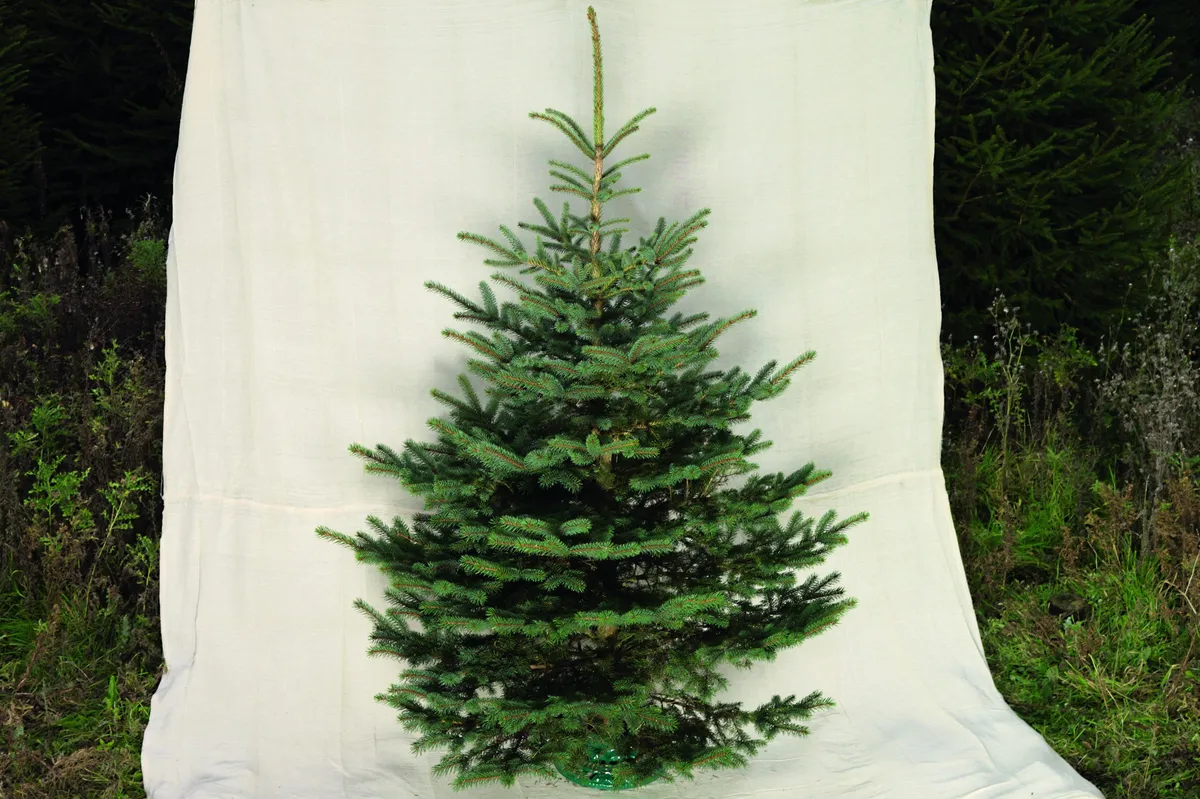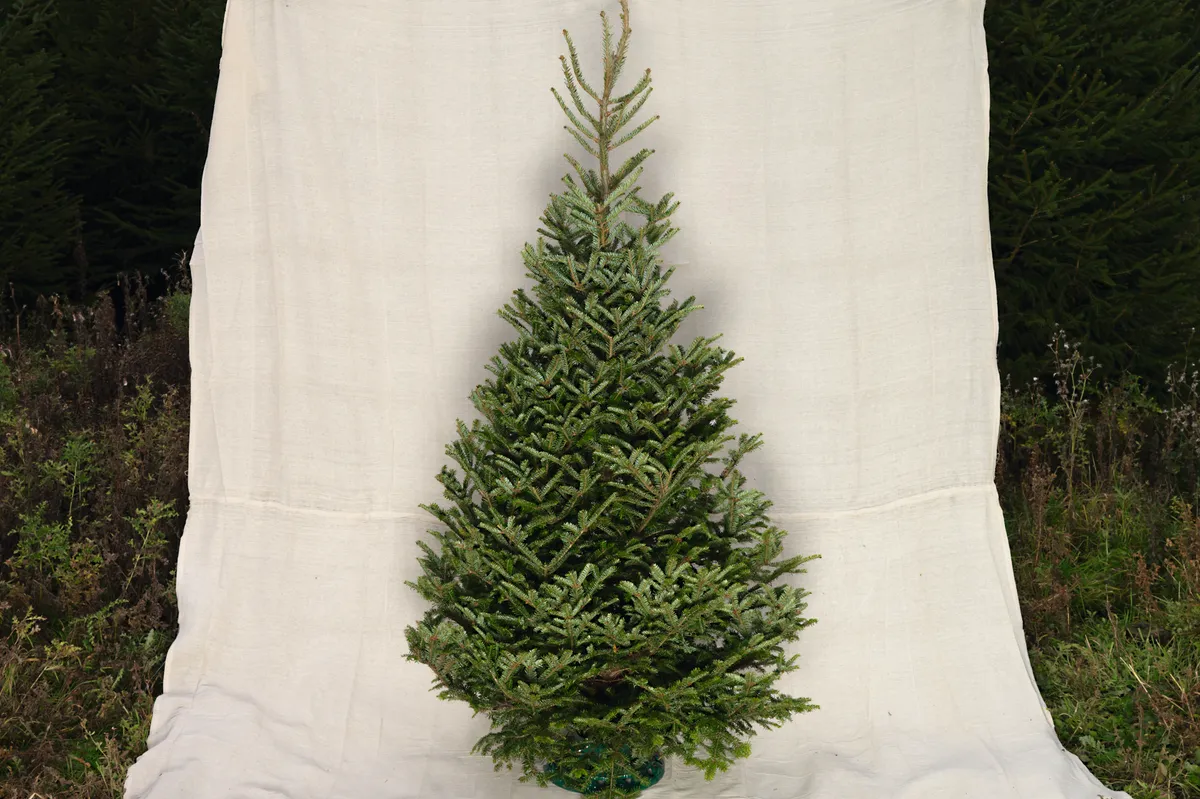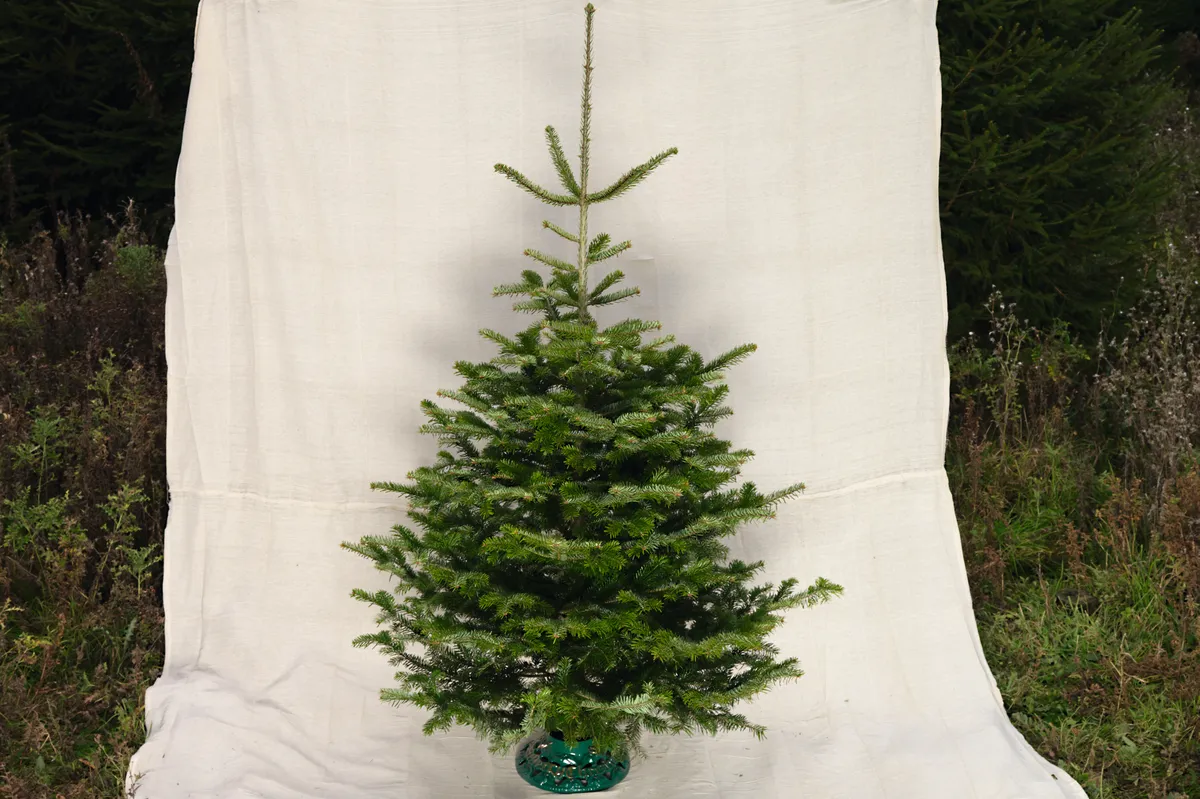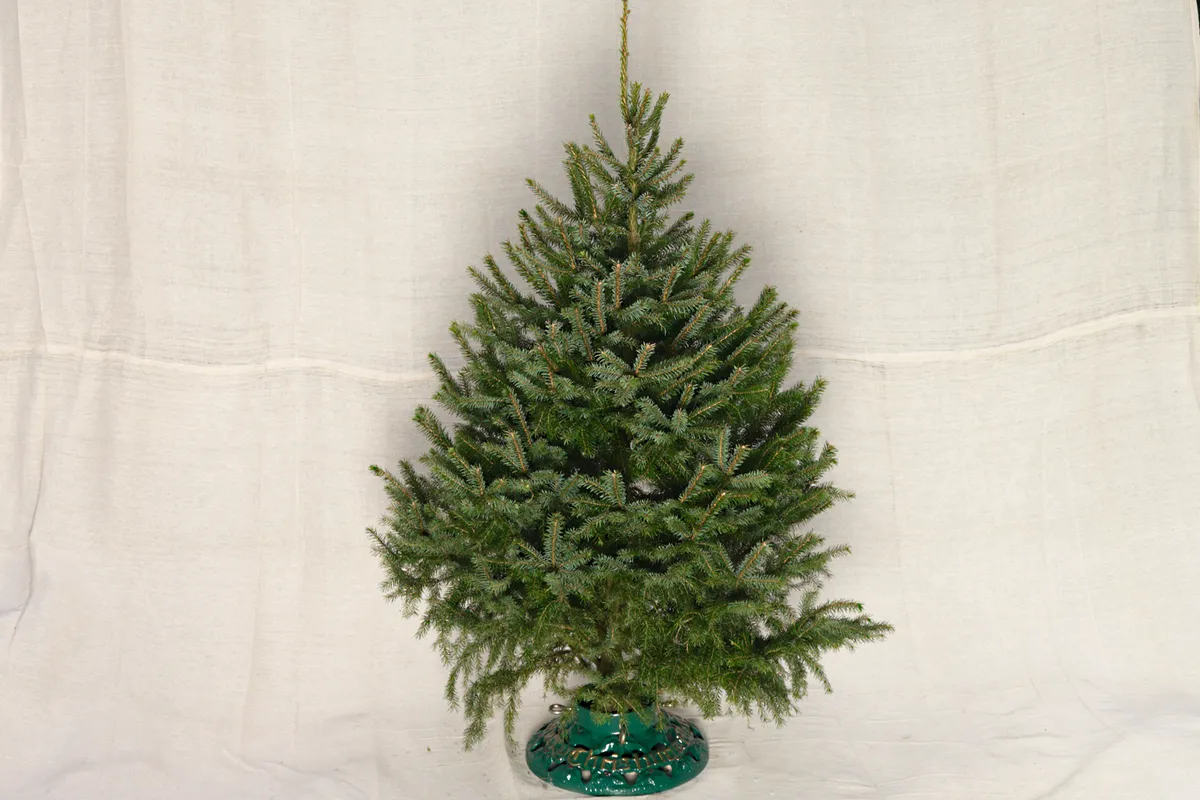Nothing says Christmas like the scent and feel of a real Christmas tree – but how do you choose the perfect one? As the festive season approaches, markets, garden centres and farm shops are filled with fresh Christmas trees, of varying sizes and types. Before you choose one, it can help to know a little more about the three main ways in which Christmas trees are sold, as well as the pros and cons of the different species available.
And if you're wondering about the most sustainable Christmas tree option, read Real or fake: What's the most sustainable Christmas tree?.
Whichever type of tree you choose, read our advice on Caring for your Christmas tree.
The three main types of Christmas tree
Cut Christmas tree
A cut tree is a fresh tree that has been grown as a crop on a Christmas tree farm, then cut down once it has reached a certain size. To help it last in your home, it will need to be placed in a Christmas tree stand that holds water, much like a bunch of cut flowers. Saw off an inch or so off the trunk before you place it in water - this will help it to take up water. Top the water up daily.
Freshly cut trees retain their leaves for longer, so try to buy directly from a grower, and bear in mind that if you buy a tree on 1 December, it will most likely be shedding its needles come the big day. Dispose of your tree responsibly after use by recycling it in your green waste bin or leaving it out for council collection. You could also shred the tree using a shredder before using it as a mulch around the garden.
Pot-grown or container-grown Christmas tree
Container-grown or pot-grown trees have been grown in their pots, and as their roots are intact, can be re-used year after year. Pot-grown trees tend to be smaller, and they also tend to sell out early in the season – it's a good idea to snap one up when you one, then leave it outside until you want to bring it indoors.
Once Christmas is over, either move the tree in its pot to a partially shaded spot outside and keep it well watered throughout the year, or plant it out in the garden.
If you are looking for an attractive conifer that you can grow in a pot in the garden and bring in for Christmas, check out our expert's choice of alternative Christmas trees.
Potted Christmas tree
Pot-grown trees are not to be confused with potted trees, which have been grown in the ground, then cut down and potted up in a container of compost or soil. Almost inevitably their roots will suffer damage during this process, so potted trees are unlikely to be successful if replanted and cannot be kept going from year to year.
Rented Christmas trees
Don't forget that you can also rent a live Christmas tree, returning it to the supplier at the end of the season. Find out how to rent a Christmas tree.
Top tips for choosing a real Christmas tree
- Pine trees tend to hold their needles best, followed by firs and then spruces.
- Check the needles and branches. If any are already dry, the tree won’t look its best for long.
- If in doubt, look for a tree with the label of the British Christmas Tree Growers’ Association (BCTGA).
- If possible, buy a tree that has been grown slowly and organically, without fertilisers and pesticides, or look for one that is Forest Stewardship Council (FSC®) Certified – the scheme aims to minimise pesticide and fertilise use.
- Source a tree that has been grown locally, to keep the amount of petrol used down. If possible, source from an organic independent retailer or farm shop – it is more likely to have come from a local grower.
- Bear in mind that if you buy a tree very early in December, it is likely to be dropping its needles and flagging by Christmas day. Ideally you should aim to keep a tree indoors for no more than 12 days.
More Christmas ideas
- Kit for gardeners for Christmas
- Children's gardening Christmas presents
- Subscriptions and garden memberships for Christmas
- The best Christmas light shows and garden trails
- Real or fake: What's the most sustainable Christmas tree?
Christmas tree species
1
Blue spruce Picea pungens

A popular garden conifer from western North America, this spruce is now increasing in popularity as a Christmas tree because of its attractive blue-green foliage. It also has a strong citrus scent, but the plus points are weighted against some very prickly needles, which are hard to pick up. It will grow up to 30m in a soft, conical shape. If container-grown, this makes a beautiful garden plant.
NEEDLE RETENTION *
SHAPE ****
SIZE ****
COLOUR ****
SCENT **
REPLANTABILITY***
2
Fraser fir Abies fraseri

A little pricey because of the time it takes to grow, but as with other firs, it has strong needle-holding ability. It has dense foliage when young, with strong branches that are good for decorating – and a slimmer conical shape that fits well in smaller spaces. Dark silvery-green leaves are shortish and needle-like but soft, and have a pleasant fragrance. Will grow to around 25m.
NEEDLE RETENTION ***
SHAPE ****
SIZE ****
COLOUR ***
SCENT **
REPLANTABILITY ***
3
Noble fir Abies procera

The noble fir is a noble Christmas tree indeed, with more open foliage and needle-like but blunt-tipped leaves, making it good for decorating. The tree also keeps its needles well, has a lovely fragrance and an upswept, conical, symmetrical shape. It hails from North America and ultimately grows up to 70m. A lush, glaucous-green in colour. Has a very long tap root, so is not suitable for growing in a container.
NEEDLE RETENTION ***
SHAPE ***
SIZE ****
COLOUR ****
SCENT ***
REPLANTABILITY ***
4
Norway spruce Picea abies

This is known as the original Christmas tree and is one for traditionalists. It has a mid-green, delicate foliage, with a really ‘Christmassy’ fragrance. The bushy, conical shape creates an attractive, sought-after silhouette but needle retention is not so good. A native of northeast Europe, ultimately growing up to 55m.
NEEDLE RETENTION *
SHAPE ****
SIZE ***
COLOUR ****
SCENT ***
REPLANTABILITY ***
5
Nordmann fir Abies nordmanniana

The most popular Christmas tree in the UK, with dark green, soft foliage that has long, flattened needles. The Nordmann fir can grow up to 60m and comes from the mountains of western Asia. It’s known for its strong needle retention and the symmetry of its shape, but can be expensive as it takes twice as long to grow as a spruce. Leaves have a citrus scent when crushed.
NEEDLE RETENTION ***
SHAPE ****
SIZE ****
COLOUR ****
SCENT **
REPLANTABILITY ***
6
Serbian spruce Picea omorika

One of the newer trees on the market, the Serbian or omorika spruce has dark green colouring and a slimmer, more graceful conical shape than other trees. It is a medium-sized tree, ultimately growing up to 35m. The leaves are flattened needles with silver undersides and do not hold wonderfully well, but are soft and have a pleasant, strong fragrance. The branches are well spaced, which makes decorating easy.
NEEDLE RETENTION *
SHAPE **
SIZE ****
COLOUR ****
SCENT **
REPLANTABILITY ***
For more gift ideas and inspiration, head to our Christmas hub